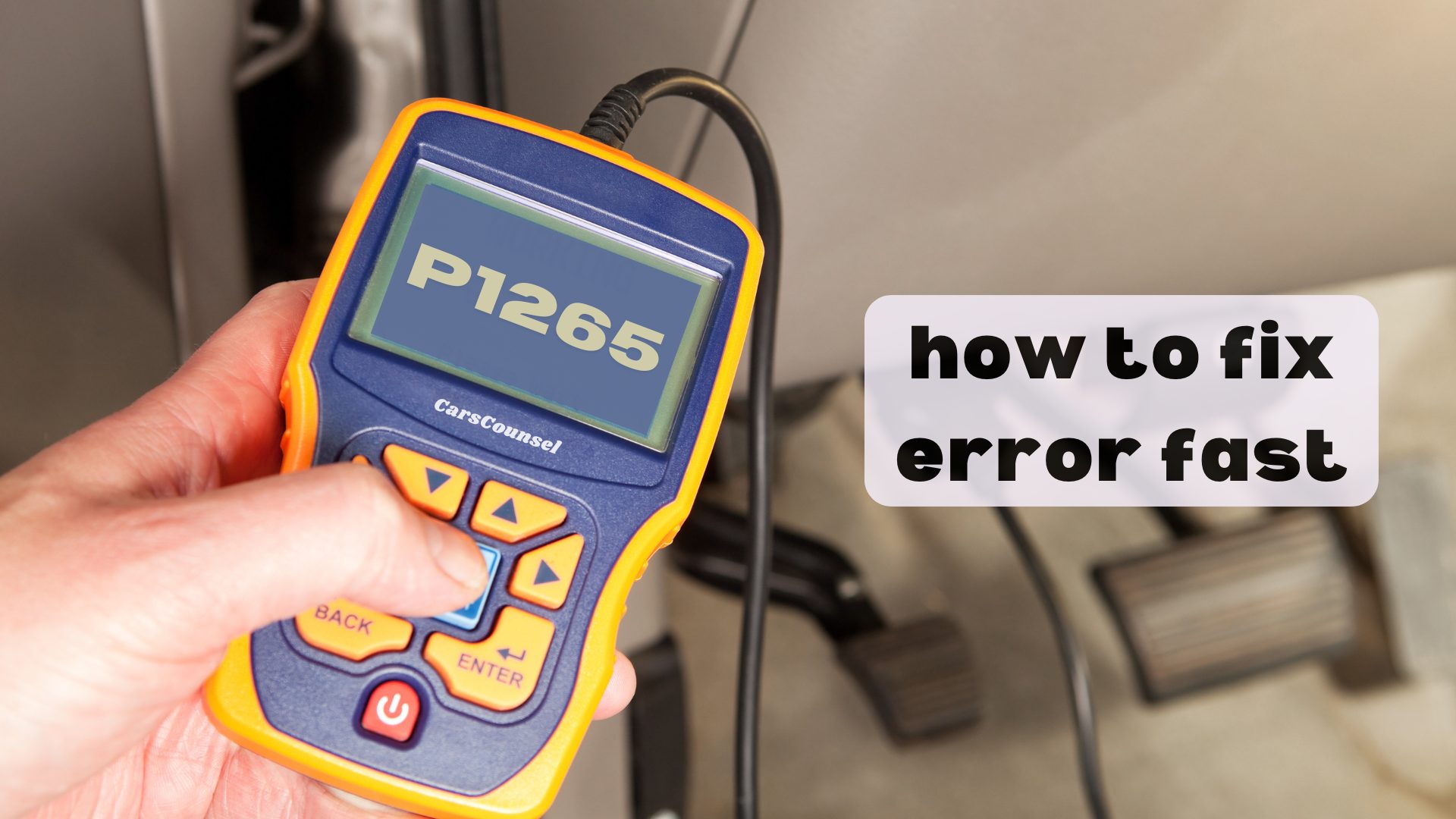You’re probably thinking you’re experiencing the worst engine trouble of your life, with your car sputtering and stalling like it’s on its last leg. But fear not! The P1265 code, indicating a high to low side short in cylinder #5, is a relatively common issue that can be resolved with the right guidance.
This trouble code signals a problem in the fuel injector circuit, which can lead to poor engine performance, misfires, and decreased fuel efficiency. But what exactly is causing this electrical short, and how can you fix it before it causes more damage?

Quick Navigation
Key Takeaways
- A P1265 code indicates a short circuit on the high to low side of cylinder #5 in the engine’s fuel injector circuit, disrupting fuel delivery.
- Common causes include a faulty fuel injector, electrical issues, a malfunctioning engine control module, and faulty wiring or connectors.
- Symptoms may include decreased fuel efficiency, engine misfires, rough idling, and the illumination of the check engine light.
- Diagnosis involves examining the fuel injector circuit, testing injector signals, checking fuel pressure, and inspecting wiring and connectors.
- Repair typically involves replacing the faulty fuel injector and/or repairing or replacing damaged wiring or connectors.
Code P1265 Description and Effects
When your vehicle’s onboard diagnostics system detects a short circuit on the high to low side of cylinder #5 in the engine’s fuel injector circuit, it triggers the P1265 code.
This code indicates a disruption in the fuel delivery process, which can lead to poor engine performance, misfires, and potential engine damage.
The fuel injector’s precise fuel delivery is compromised, resulting in decreased fuel efficiency and potentially causing your engine to stall or hesitate.
If left unaddressed, this issue can lead to further damage, affecting your vehicle’s overall engine performance and fuel efficiency.
It’s essential to address this issue promptly to prevent further complications and maintain ideal engine performance.
Common Causes of the Issue
A faulty fuel injector is often the primary culprit behind the P1265 code, disrupting the precise fuel delivery process and leading to inefficient engine performance.
As you diagnose the issue, you’ll want to investigate faulty components, such as the fuel injector, wiring, and connectors. Electrical issues, like corrosion or damage to the fuel injector wiring, can also cause the P1265 code.
Additionally, a malfunctioning engine control module (ECM) or a short circuit in the fuel injector circuit can trigger this code. By identifying and addressing these common causes, you’ll be well on your way to resolving the issue and restoring your engine’s performance.
Identifying the Symptoms
Now that you’ve identified the common causes of the P1265 code, it’s time to recognize the symptoms that indicate this issue is present in your vehicle.
When your engine’s fuel injector circuit has a high to low side short on cylinder #5, you’ll likely notice a decline in fuel efficiency and engine performance.
You may experience engine misfires or rough idling, which can lead to decreased power and acceleration.
The check engine light will likely illuminate, and you may even encounter engine stalling or hesitation.
Diagnosis and Testing Steps
Diagnosing a P1265 code requires a methodical approach to identify the root cause of the issue.
You’ll need to examine the fuel injector circuit and check for any signs of damage, corrosion, or wear. Use a multimeter to test the injector signals and verify they’re within the specified range.
Next, check the fuel pressure to confirm it’s at the recommended level. If the pressure is low, it may indicate a faulty fuel pump or restricted fuel filter.
You should also inspect the wiring and connectors for any signs of damage or corrosion.
Repairing the Faulty Fuel Injector
Your fuel injector repair begins by disconnecting the battery to prevent any accidental engine starts or electrical shocks.
Next, you’ll need to remove the fuel injector electrical connector and fuel supply line. This will give you access to the faulty fuel injector.
- Remove the fuel injector retaining clip and gently pull the injector out of its bore.
- Install a new fuel injector, making sure it’s properly seated and secured.
- Reconnect the fuel supply line and electrical connector, verifying they’re secure and not damaged.
Remember to test the fuel injector circuit after replacement to confirm proper fuel pressure and flow. This will help prevent future issues and guarantee your engine runs smoothly.
Wiring and Connector Repair
When inspecting the fuel injector circuit, pay close attention to the wiring and connectors, as corrosion, damage, or wear can cause electrical shorts and disrupt fuel injector operation.
You’ll want to look for signs of wire damage, such as fraying, cuts, or burn marks, which can lead to short circuits. Additionally, inspect the connectors for corrosion, rust, or loose connections, which can also disrupt the fuel injector signal.
Use a multimeter to test the wiring and connectors for any electrical shorts or resistance. If you find any issues, repair or replace the damaged wiring or connectors to guarantee proper fuel injector operation and prevent further engine damage.
Estimated Repair Costs and Time
Across various repair shops, the cost of fixing a P1265 code can vary significantly, depending on the specific cause of the issue, labor rates, and location.
As you prepare for the repair, it’s essential to understand the estimated costs and time involved.
Here’s a breakdown of what you can expect:
- Fuel Injector Replacement: $150-$500
- Wiring and Connector Repair: $100-$300
- Total Repair Cost: $200-$800 or more (including parts and labor)
Keep in mind that these estimates may vary depending on your location and the specific repair shop you choose.
By addressing the P1265 code, you’ll not only restore your engine’s performance but also enjoy potential fuel savings in the long run.
Labor rates will also impact the final cost, so be sure to consult with a qualified mechanic for an accurate estimate.
Preventing Future Engine Problems
Proper engine maintenance is key to preventing future engine problems and avoiding costly repairs.
You can guarantee your vehicle runs smoothly and efficiently by following a regular maintenance schedule. This includes oil changes, filter replacements, and tune-ups.
Regular maintenance helps identify potential issues before they become major problems, saving you time and money in the long run.
Additionally, maintaining your vehicle’s fuel efficiency is vital. A well-maintained engine will burn fuel more efficiently, reducing your fuel costs and minimizing your carbon footprint.
More OBD-II Codes
Conclusion
You’ve made it this far, congrats! You’ve probably spent hours troubleshooting, sweating, and cursing at your engine. But now you’re finally ready to tackle that pesky P1265 code. Remember, it’s not just about fixing the faulty fuel injector or wiring issue – it’s about regaining your sanity and restoring your engine’s former glory. So, take a deep breath, roll up your sleeves, and get ready to wrestle that code to the ground. Your engine (and your therapist) will thank you.

